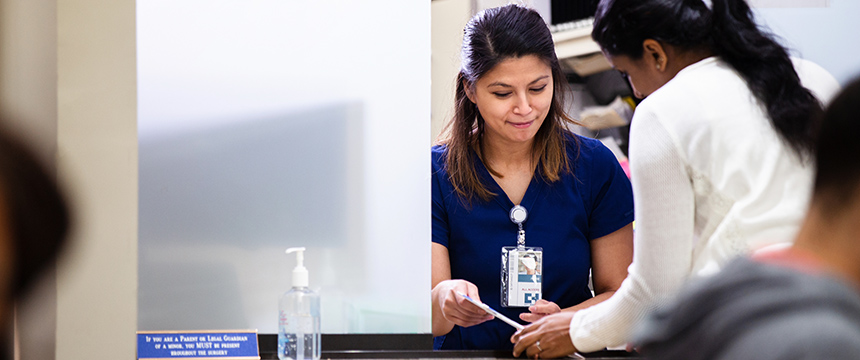
Introduction
More than 900 hospitals across the United States are approaching a Centers for Medicare & Medicaid Services (CMS)-imposed deadline to report overpayments from the removal (explant) of defective cardiac medical devices if rebates of 50% or more provided by the manufacturers were not deducted from Medicare claims. In calculating overpayments over the past six (6) years, hospitals must take care to employ, and thoroughly document, the methodology used in calculating the overpayment, especially if a statistical methodology is used. Hospitals may be responsible for repaying significant amounts, and should seek counsel regarding the methodology and description provided to CMS.
Background
Cardiac medical device implants—including defibrillators, pacemakers, and their associated electrical components—sometimes must be replaced due to defects, recalls, or mechanical complications. Generally, within the five-year warranty period, cardiac medical device manufacturers will issue a full or partial credit to the hospital to cover the cost of the defective device, or provide a replacement without charge. When a Medicare beneficiary receives one of these discounted replacement devices for at least 50% of the cost of the explanted device, the hospital is required to report the credit to Medicare, and accept a payment reduction. This requirement derives from Medicare regulations regarding hospital inpatient services (42 C.F.R. § 412.89) and hospital outpatient services (42 C.F.R. § 419.45). Where a rebate of more than 50% is received, the hospital is supposed to include a modifier on its claim for payment and indicate the amount of the rebate. Failure to do so—usually due to inadequate internal controls in the hospital billing department—could be argued to cause/result in an overpayment to the hospital if it was paid for the full cost of the device
There is a long history of Office of the Inspector General of the Department of Health & Human Services (OIG) interest in the topic of device credits, including a number of so-called comprehensive hospital compliance audits, and some hospitals challenged the OIG’s interpretation of rules in this area. This is the latest effort by the OIG and CMS to address non-compliance in this area. At this time, CMS is pursuing overpayments identified in an OIG Audit, and those hospitals that received letters must take the issue seriously.
Issue and Analysis
In November 2020, the OIG reported the findings of its audit of 6,558 Medicare claims for cardiac medical device replacement procedures conducted between January 1, 2015 and June 30, 2017. OIG concluded that, for nearly half of the audited claims, hospitals likely did not comply with Medicare requirements for reporting manufacturer credits on defective cardiac medical devices, resulting in over $33 million in potential overpayments to 911 hospitals. In order to identify specific hospitals, the OIG obtained information from several manufacturers regarding rebates that were issued, and cross-checked a sample of claims to see if the rebates were correctly reported.
As a result, in late 2020 and early 2021, CMS issued letters notifying the hospitals of the potential overpayments identified in the OIG audit. CMS gave the hospitals 240 days (6 months plus 60 days per the Overpayment Refund Rule) from the date of the letter to investigate, identify, report, and return any cardiac medical device-related overpayments from the last six years. Hospitals must report the findings of their self-assessments to their Medicare Administrative Contractors (MACs). Deadlines are fast approaching for the hospitals that received letters from CMS, some as soon as August 28, 2021, and hospitals need to be prepared to meet them. The six-month time frame is set forth in the letters to hospitals as CMS’s view of a reasonable time to investigate, after which the 60 day repayment requirement of the Overpayment Refund Regulation (42 C.F.R. § 401.305) would apply. Given the complexity of the investigation required, there may be some flexibility for a hospital to take more time for particularly complex assessments and quantifications. So hospitals may seek to avail themselves of more time and should communicate with CMS and other their MACs about their efforts in that regard. Counsel should be sought concerning how to proceed in particular situations.
CMS has indicated that it expects to receive a detailed description of the exact methodology that each hospital used to calculate overpayments, including a detailed, written description of the methodology used to identify the universe and sample size of claims reviewed in the self-assessment. If statistical sampling is used, hospitals should be guided by Chapter 8.4 of the Medicare Program Integrity Manual, which covers valid statistical sampling methodologies. As already noted, the description of the methodology must be clear and address the technical issues adequately, in order for hospitals to put this issue behind them. Similarly, hospitals that wish to challenge the CMS and OIG interpretation of the rebate reporting requirement, or believe they otherwise handled any credits appropriately, are encouraged to document the position that the hospital has not “identified” an overpayment and why.
For assistance with these issues, contact Jeffrey Thrope, Larry Vernaglia, or others in the Foley & Lardner Health Care Practice Group.

